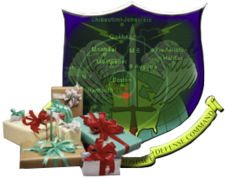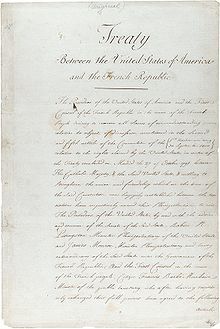Cross posted from The Stars Hollow Gazette
This is your morning Open Thread. Pour your favorite beverage and review the past and comment on the future.
Find the past “On This Day in History” here.
December 25 is the 359th day of the year (360th in leap years) in the Gregorian calendar. There are six days remaining until the end of the year. This day is commonly known as Christmas Day.
On this day in 1818, the first performance of “Silent Night” takes place in the church of St. Nikolaus in Oberndorf, Austria.
The original lyrics of the song Stille Nacht were written in Austria by the priest Father Joseph Mohr and the melody was composed by the Austrian headmaster Franz Xaver Gruber. In 1859, John Freeman Young (second Bishop, Episcopal Diocese of Florida) published the English translation that is most frequently sung today. The version of the melody that is generally sung today differs slightly (particularly in the final strain) from Gruber’s original, which was a sprightly, dance-like tune in 6/8, as opposed to the slow, meditative lullaby version generally sung today. Today, the lyrics and melody are in the public domain.

 On this day in 1955,
On this day in 1955, 


 In April 1803, the United States purchased from France the 828,000 square miles that had formerly been French Louisiana. The area was divided into two territories: the northern half was Louisiana Territory, the largely unsettled (though home to many Indians) frontier section that was later explored by Lewis and Clark; and the southern Orleans Territory, which was populated by Europeans.
In April 1803, the United States purchased from France the 828,000 square miles that had formerly been French Louisiana. The area was divided into two territories: the northern half was Louisiana Territory, the largely unsettled (though home to many Indians) frontier section that was later explored by Lewis and Clark; and the southern Orleans Territory, which was populated by Europeans.
 When these phrases appeared in the pages of the Pennsylvania Journal for the first time, General George Washington’s troops were encamped at McKonkey’s Ferry on the Delaware River opposite Trenton, New Jersey. In August, they had suffered humiliating defeats and lost New York City to British troops. Between September and December, 11,000 American volunteers gave up the fight and returned to their families. General Washington could foresee the destiny of a rebellion without an army if the rest of his men returned home when their service contracts expired on December 31. He knew that without an upswing in morale and a significant victory, the American Revolution would come to a swift and humiliating end.
When these phrases appeared in the pages of the Pennsylvania Journal for the first time, General George Washington’s troops were encamped at McKonkey’s Ferry on the Delaware River opposite Trenton, New Jersey. In August, they had suffered humiliating defeats and lost New York City to British troops. Between September and December, 11,000 American volunteers gave up the fight and returned to their families. General Washington could foresee the destiny of a rebellion without an army if the rest of his men returned home when their service contracts expired on December 31. He knew that without an upswing in morale and a significant victory, the American Revolution would come to a swift and humiliating end. On this day in 1918, the House of Representatives passed the
On this day in 1918, the House of Representatives passed the 
